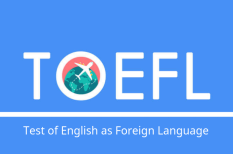Một trong số những tiêu chí chấm của IELTS Writing Task 2 là Ngữ pháp và Từ vựng được sử dụng trong bài.
Ngữ pháp chủ yếu là về số lượng cấu trúc câu mà bạn sử dụng: câu đơn, câu ghép, câu phức; và độ chính xác khi bạn sử dụng các cấu trúc đó. Trong bài này, mình sẽ trình bày về những cấu trúc câu khác nhau được sử dụng để cải thiện điểm ngữ pháp trong bài luận Task 2. Áp dụng những cấu trúc câu này trong quá trình luyện thi IELTS để có sự chuẩn bị tốt nhất cho bài thi thật.
Trong bài viết IELTS Writing Task 2, bạn nên sử dụng đa dạng các cấu trúc câu. Như đã nói ở trên, có ba loại cấu trúc câu chính:
- Câu đơn – simple sentences
- Câu ghép – compound sentences
- Câu phức – complex sentences.

Sử dụng cấu trúc câu nào để thi ielts writing đạt điểm cao?
Chi tiết tức loại cấu trúc câu trong phần thi ielts writing
1. Câu đơn: Câu đơn là câu có một vế độc lập đứng một mình.
Ví dụ: Computers are useful tools.
2. Câu ghép: Câu ghép là câu có nhiều hơn một vế độc lập. Trong loại câu này, các vế độc lập thường được nối với nhau bởi các từ nối (conjunctions). Các conjunctions phổ biến là: and, nor, or, but, yet, so, for. Ngoài ra, có thể nối bằng các trạng từ (adverbs) như: however, nevertheless, otherwise, instead, also, moreover, furthermore, besides, consequently, therefore, thus, likewise.
Adverbs thường được dùng để nối các mệnh đề độc lập thành câu ghép. Khi dùng adverbs, bạn lưu ý là thường có dấu chấm phẩy trước adverb hoặc dấu phẩy đằng sau adverbs.
Dưới đây là một ví dụ về việc nối câu:
Ví dụ 1:
- Câu đơn 1: Computers have improved the way people communicate at the workplace.
- Câu đơn 2: An increasing number of companies are now using the email as a form of communication.
- Câu ghép: Computers have improved the way people communicate at the workplace, so an increasing number of companies are now using the email as a form of communication.
Ví dụ 2:
- Câu đơn 1: The Internet is being used worldwide.
- Câu đơn 2: Many people do not have access to the Internet.
- Câu ghép: The Internet is being used worldwide; however, many people do not have access to it.
3. Câu phức: Một câu phức là câu có hơn một mệnh đề. Khác với câu ghép, câu phức được tạo ra bởi việc nối một mệnh đề độc lập (independent clause) với một mệnh đề phụ thuộc (dependent clause). Mệnh đề phụ thuộc là loại mệnh đề không thể đứng một mình mà có nghĩa, mà phải đi kèm với một mệnh đề khác.
Ví dụ: Computers are useful tools that offer several benefits to people.
Mệnh đề độc lập(Computers are useful tools) có thể đứng một mình. Tuy nhiên, mệnh đề phụ thuộc (that offer several benefits to people) không thể tự tạo thành một câu.
Câu phức thường dùng các từ để nối các mệnh đề lại với nhau, ví dụ:
- Conjunctions of contrast: although, though, even though, while, whereas
- Conjunctions of cause and effect: as, since, because, in order that
- Conjunctions of condition: if, unless, only if, even if, in case (that), whether or not
- Conjunctions of time: until, after, before, while, since, when
- Relative pronouns: which, that, who, whose, whom.
Chúng ta cùng xem xét một vài ví dụ về việc ghép câu đơn thành câu phức, sử dụng conjunctions và relative pronouns trong tiếng anh nhé!
Ví dụ 1:
- Câu đơn 1: Computers can be used in harmful ways.
- Câu đơn 2: Computers offer several benefits to people.
- Câu phức: Although computers can be used in harmful ways, they also offer several benefits to people.
Ví dụ 2:
- Câu đơn 1: Computers are useful tools.
- Câu đơn 2: Computers offer several benefits to people.
- Câu phức: Computers are useful tools that offer several benefits to people.
Because computers are useful tools, they offer several benefits to people.
Bài tập thực hành: Các bạn hãy thử viết lại các câu đơn sau thành câu ghép hoặc câu phức nhé.
Có nhiều cách làm đúng cho một cặp câu đơn như vậy. Mình sẽ làm câu đầu tiên để các bạn dễ hiểu.
A
Japan is a world leader in modern technology.
Japan still maintains its traditional values, such as respect for elders.
Một số cách làm gợi ý:
Although Japan is a world leader in modern technology, it still maintains its traditional values, such as respect for elders.
Japan is a world leader in modern technology, though it still maintains its traditional values, such as respect for elders.
Japan is a world leader in modern technology; however, it still maintains its traditional values, such as respect for elders.
Và sau đây là đến lượt các bạn thực hành nè:
B. Computers have a wide variety of software available.
The software can complete certain tasks automatically.
C. There are some clear disadvantages of online study.
The benefits provide students with a valuable alternative to classroom learning.
D. Watching television exposes people to opinions from outside their own cultural group.
This leads to a greater understanding of the views of others.
E. Many animals live short lives in terrible conditions.
Then they are killed and sold as meat.
F. Pressure at work and home is increasing.
Many people suffer from high levels of stress.
Luyện thi Ielts writing: Đừng tiết kiệm các biển chỉ đường
Trong IELTS Writing có một tiêu chí gọi là Coherence and Cohesion – Mạch lạc và liên kết. Hiểu nôm na là bài luận (essay) của chúng ta phải có sự thống nhất trong ý tưởng chung, các ý liền mạch, liên kết theo một trình tự logic, người đọc dễ hiểu và dễ nắm bắt toàn bài cũng như từng chi tiết nhỏ. Để đạt band 6-7 cho tiêu chí này, chúng ta phải sử dụng một lượng “từ chỉ đường” (signposting expression) để nối ý, dẫn dắt câu, ví dụ như : however, furthermore, therefore…
Sẽ là một bất lợi lớn cho bạn nếu bạn chỉ chăm chăm viết câu để diễn đạt ý, mà quên mất tiêu những chiếc “biển chỉ đường” này. Chúng giúp bài văn được gắn kết chặt chẽ, và điều này là cực kì quan trọng trong văn viết. Nhưng sẽ còn tai hại hơn nếu bạn sử dụng những từ nối này một cách ngẫu hứng, dùng sai vị trí, sai ý nghĩa. Vì thế, hôm nay mình sẽ giới thiệu với các bạn những signposting expressions cùng ý nghĩa và cách dùng cho đúng trong bài luận Writing nhé!
1. Khi thêm ý vào đoạn
- Furthermore/Moreover (adv): hơn nữa.
Hai từ này được sử dụng khi giới thiệu thêm một thông tin có tác dụng bổ sung cho thông tin được đưa ra phía trước nó.
Ví dụ:
Furthermore, they claim that any such interference is completely ineffective.
The young find everthing so simple. The young, moreover, see it as their duty to be happy and do their best to be so.
2. Giới thiệu ý đối lập
- Nevertheless (adv): tuy nhiên.
Từ này dùng khi nói về một thông tin đối lập với thông tin vừa được trình bày.
Ví dụ:
Most marriage fail after between five and nine year. Nevertheless, people continue to get married.
There had been no indication of any loss of mental faculties. His whole life had nevertheless been clouded with a series of illnesses.
- Whereas (conjunction): trong khi.
Từ này dùng khi trình bày một nhận định đối lập với nhận định vừa được nêu ra ở mệnh đề chính.
Ví dụ:
Pensions are linked to inflation, whereas they should be linked to the cost of living.
Whereas the population of working age increased by 1 million between 1981 an 1986, today it is barely growing.
Video giới thiệu Khóa học luyện thi ielts cấp tốc - Academy.vn: Kỹ năng cho người đi làm
3. Đề cập đến trình tự
- Former (pronoun): trước đây.
Khi hai người, hai vật hoặc hai nhóm đối tượng được đề cập đến, chúng ta dùng “the former” để chỉ người, vật hoặc nhóm được đề cập trước.
Ví dụ: He writes about two series of works: the Caprichos and the Disparates. The former are a series of love stories.
- Initial (adj): lúc đầu
Chúng ta dùng “initial” để diễn tả sự việc xảy ra đầu tiên trong một quá trình nào đó. Ví dụ:
The initial reaction has been excellent.
The aim of this initial meeting is to clarify the problem.
- Latter (pronoun): sau cùng
Khi có 2 sự vật được nhắc tới, chúng ta gọi sự vật thứ hai là “the latter”.
Ví dụ: At school, he enjoyed football and boxing; the latter remained a lifelong habit.
Without hesitation they chose the latter.
- Prior (adj): trước
Dùng “prior” để chỉ việc đã xảy ra, hoặc phải xảy ra trước khi sự việc khác xảy đến. Ví dụ:
Prior knowledge of the program is not essential.
For the prior year, they reported net income of $1.1 million.
Chú ý: prior to = before
VD: Prior to his Japan trip, he went to New York.
Respectively (adv): lần lượt
Ví dụ: Obesity and high blood pressure occurred in 16 percent and 14 percent, respectively.
4. Khái quát ý
- Overall (adv): tổng thể
Dùng overall khi đang nói về một tình huống tổng quát. Từ này dùng nhiều trong câu giới thiệu tổng quát xu hướng chung của Task 1 IELTS Writing.
Ví dụ: Overall, the sale of book increased during the period.
Trình bày kết quả và đi tới kết luận
- Hence (adv): vì thế
Dùng hence để chỉ câu khẳng định bạn sẽ đưa ra là kết quả của ý vừa viết trước đó.
Ví dụ: The trade imbalance is likely to rise again in 1990. Hence a new set of policy actions will be required soon.
European music happens to use a scale of eight notes, hence the use of the term octave.
- Thus (adv): như vậy
Dùng thus để đưa ra kết quả hoặc hậu quả của ý vừa viết trước đó. Ví dụ:
Even in a highly skilled workforce some people will be more capable and thus better paid than others.
Women’s access to the basic means of production and thus to political power.





